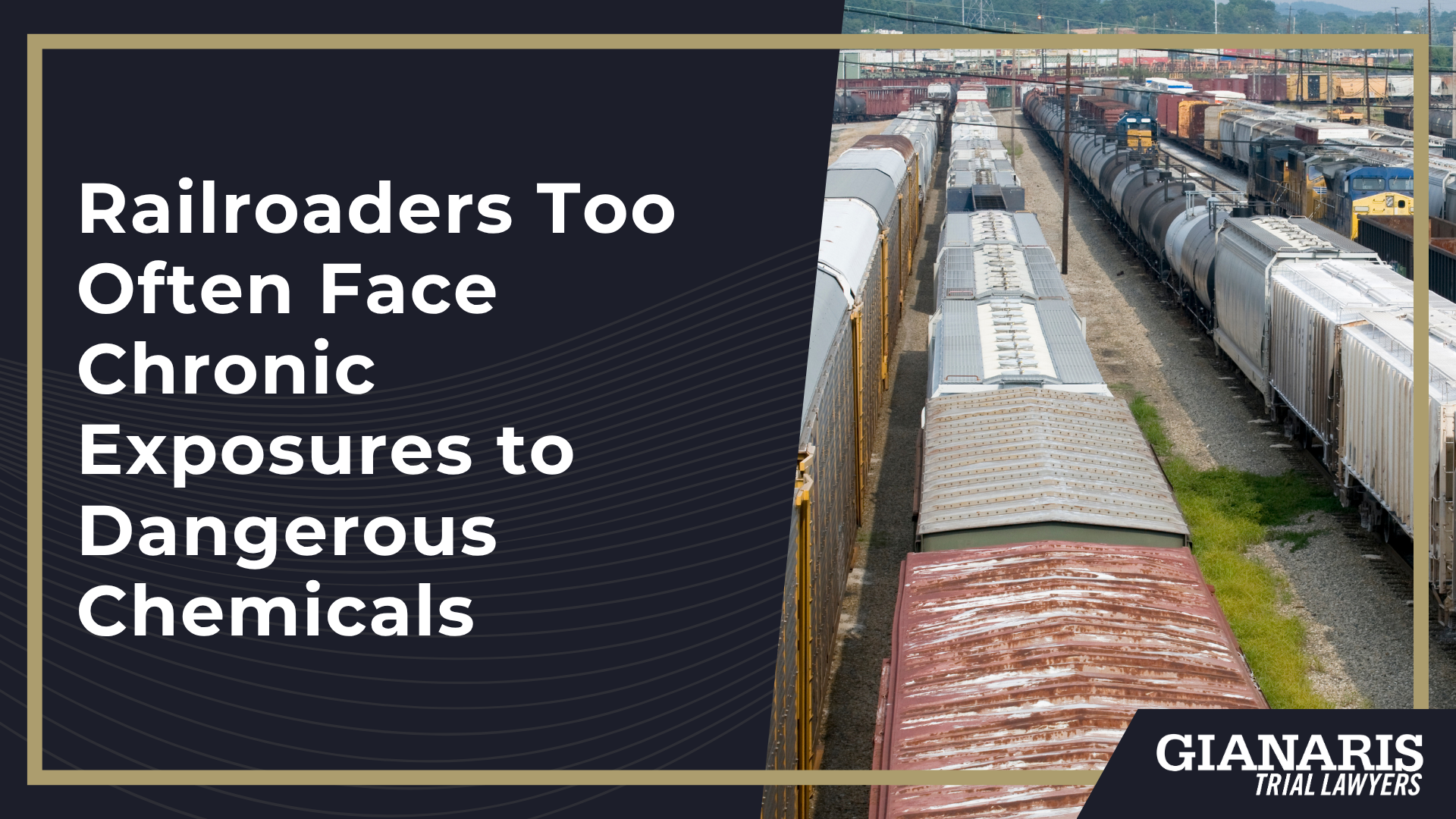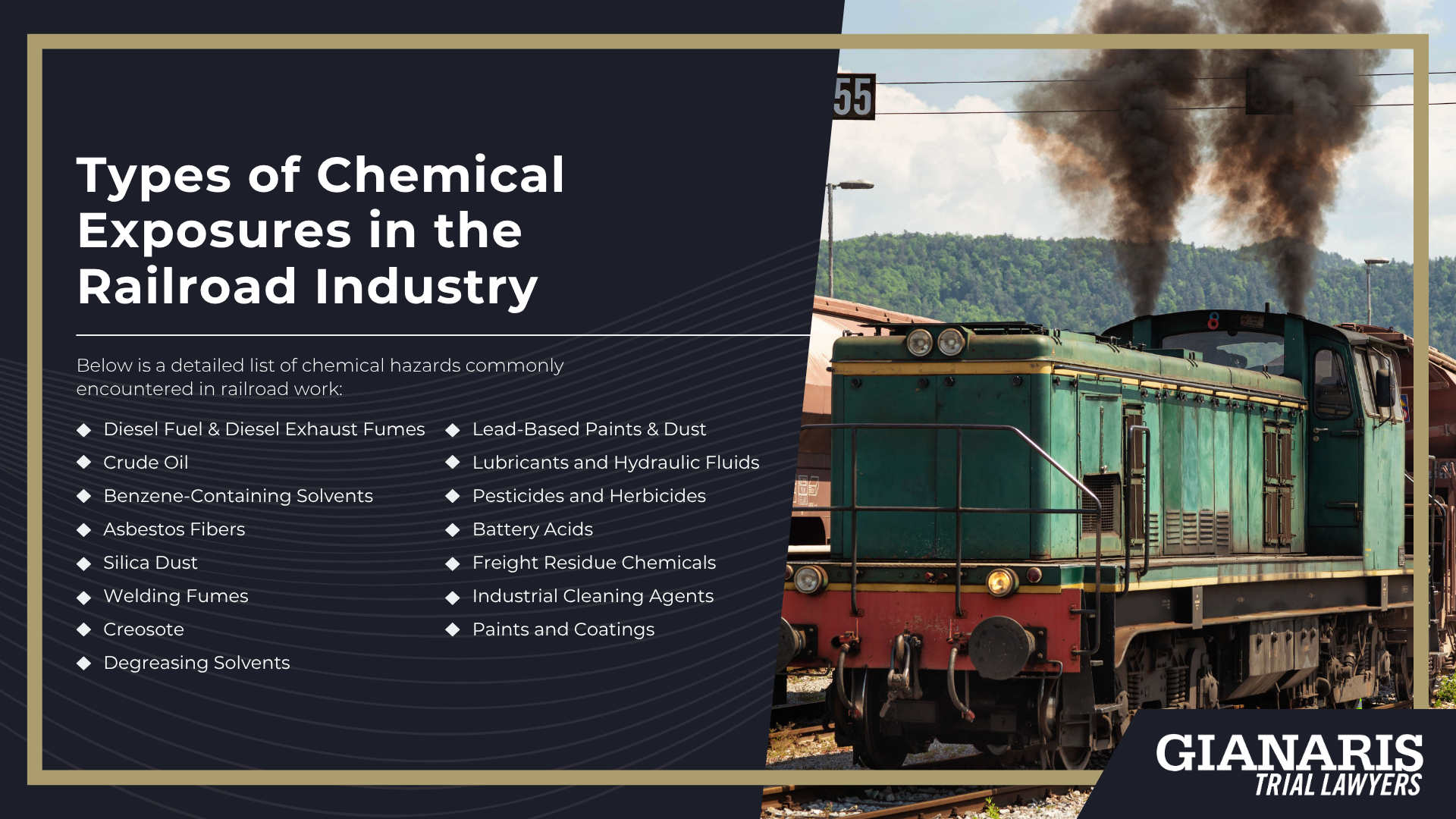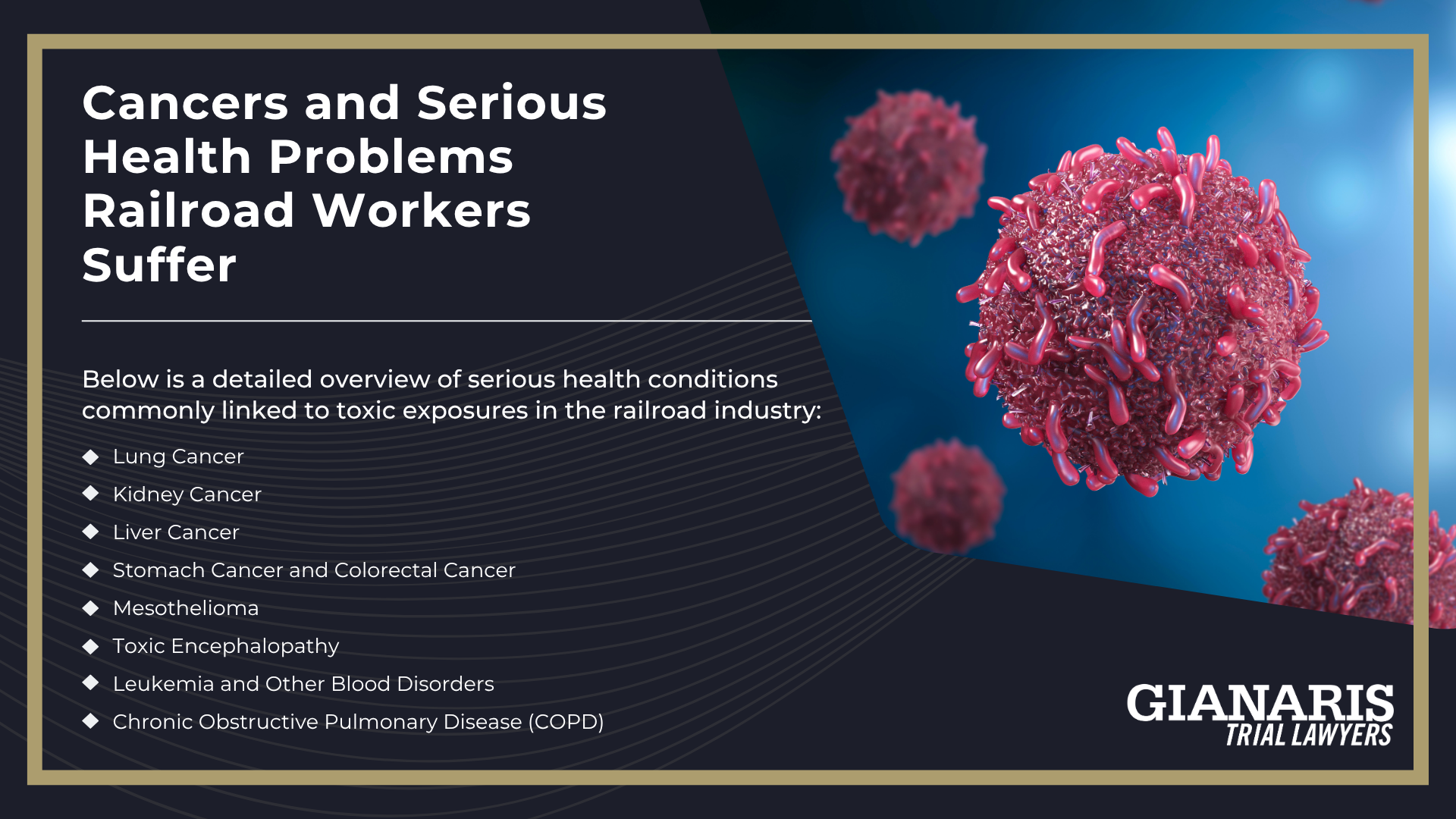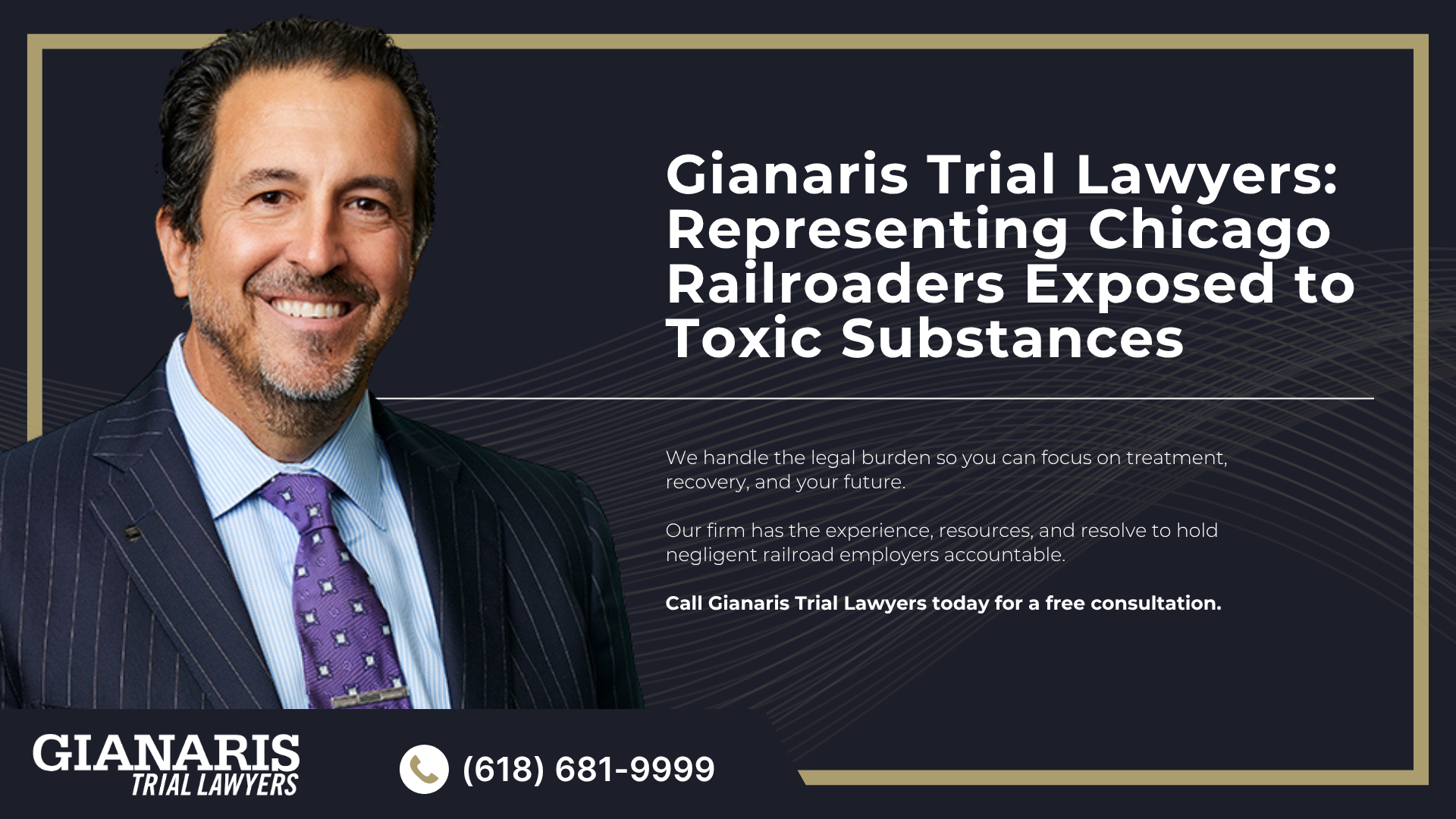Railroad workers often endure chronic exposure to hazardous chemicals throughout their careers, leading to significant health risks.
Substances like diesel exhaust, benzene, asbestos, and creosote are prevalent in the railroad industry and have been linked to serious illnesses, including various forms of cancer.
The Environmental Protection Agency (EPA) classifies benzene as a known human carcinogen associated with cancers of the lung, bladder, colon, esophagus, throat, kidneys, rectum, and stomach.
Similarly, the International Agency for Research on Cancer (IARC) has specifically noted that diesel exhaust is a Group 1 carcinogen, indicating sufficient evidence of carcinogenicity in humans.
These classifications underscore the elevated risks faced by railroad workers due to prolonged exposure to these substances.

Despite growing awareness, many workers continue to be exposed to these dangerous chemicals without adequate protection or safety measures in place.
It’s crucial for affected individuals to recognize the potential health implications and seek appropriate medical and legal assistance.
Legal avenues, such as claims under the Federal Employers Liability Act (FELA), may provide a path for compensation for those harmed by occupational exposures.
Awareness and proactive measures are essential to protect the health and rights of railroad workers facing these occupational hazards.
Types of Chemical Exposures in the Railroad Industry
Railroad work exposes employees to a wide range of toxic substances through direct skin contact, inhalation, and long-term environmental presence in rail yards, engine rooms, and repair shops.
These exposures can be acute or chronic, with health consequences that often appear years later.
From loading crude oil tankers to welding in confined spaces, the nature of the railroad industry places workers in constant proximity to hazardous materials.

Below is a detailed list of chemical hazards commonly encountered in railroad work:
- Diesel Fuel & Diesel Exhaust Fumes: Emitted during locomotive operation and refueling. Contains benzene, nitrogen oxides, carbon monoxide, and ultrafine particulates. Often accumulates in engine rooms, cabs, and enclosed maintenance shops.
- Crude Oil: Transported in tankers. Spills, leaks, and loading operations expose workers to volatile organic compounds (VOCs) and polycyclic aromatic hydrocarbons (PAHs).
- Benzene-Containing Solvents: Found in degreasers, brake cleaners, and engine additives. Benzene is absorbed through skin and lungs and is strongly linked to leukemia and other blood cancers.
- Asbestos Fibers: Present in pipe insulation, brake pads, gaskets, and older locomotive components. Asbestos exposure occurs during repairs, maintenance, and demolition work.
- Silica Dust: Generated during track repair, ballast handling, concrete cutting, and sanding operations. Inhalation over time causes silicosis and raises lung cancer risk.
- Welding Fumes: Produced during track fabrication, rolling stock repairs, and structural maintenance. Contains manganese, chromium, and lead oxide fumes, especially dangerous in poorly ventilated spaces.
- Creosote: Used to treat railroad ties and timber bridges. Exposure occurs through skin contact and inhalation when cutting or working near aging wooden ties.
- Degreasing Solvents: Includes trichloroethylene (TCE) and perchloroethylene (PERC), which are used for cleaning engine parts and electrical components. Both are classified as carcinogenic.
- Lead-Based Paints & Dust: Found on aging infrastructure and rolling stock. Sanding or chipping old surfaces releases lead particles into the air.
- Lubricants and Hydraulic Fluids: Exposure during coupling, brake work, or equipment maintenance. These often contain mineral oils and chemical additives with endocrine-disrupting properties.
- Pesticides and Herbicides: Sprayed along tracks for vegetation control. Workers may be exposed through drift, surface contact, or during application.
- Battery Acids: Used in signal systems, emergency equipment, and backup power. Can cause burns and respiratory irritation upon contact or inhalation.
- Freight Residue Chemicals: Railcars transporting industrial chemicals can leave behind toxic residue, including chlorine, sulfur dioxide, and ammonium nitrate.
- Industrial Cleaning Agents: Used in rail yard sanitation or chemical cleaning of tankers. Can include caustic agents, ammonia, and aldehydes.
- Paints and Coatings: Contains VOCs like toluene and xylene, often used during refurbishment projects in enclosed or semi-enclosed shop environments.
Each of these substances carries its own set of health risks depending on exposure duration, concentration, and route (inhalation, dermal, ingestion).
Cancers and Serious Health Problems Railroad Workers Suffer
Railroad workers are at heightened risk for a range of cancers and chronic illnesses due to prolonged exposure to hazardous substances such as diesel exhaust, asbestos, silica dust, benzene, and industrial solvents.
These exposures often occur in environments lacking adequate ventilation or protective measures, leading to significant health consequences over time.

Below is a detailed overview of serious health conditions commonly linked to toxic exposures in the railroad industry:
- Lung Cancer: Prolonged inhalation of diesel exhaust, asbestos fibers, and silica dust significantly increases the risk of lung cancer among railroad workers. Diesel exhaust contains carcinogenic compounds like benzene and formaldehyde, while asbestos and silica dust can cause chronic inflammation and scarring in lung tissue, leading to malignancy.
- Kidney Cancer: Exposure to industrial solvents such as trichloroethylene (TCE) and tetrachloroethylene (PERC), commonly used in degreasing and cleaning operations, has been associated with an increased risk of kidney cancer. These chemicals can be absorbed through the skin or inhaled, accumulating in the kidneys over time.
- Liver Cancer: Chronic exposure to solvents like TCE and PERC not only affects the kidneys but also poses a risk to liver health. These substances can cause liver toxicity and have been linked to liver cancer in workers with prolonged exposure.
- Stomach Cancer and Colorectal Cancer: Ingestion or inhalation of carcinogens such as benzene, found in diesel fuel and exhaust, and creosote, used in treating railroad ties, has been linked to gastrointestinal cancers, including stomach and colorectal cancers.
- Mesothelioma: This aggressive cancer affects the lining of the lungs and is primarily caused by asbestos exposure. Railroad workers involved in maintenance and repair of older equipment may inhale asbestos fibers released from insulation and brake components.
- Toxic Encephalopathy: Long-term exposure to organic solvents used in cleaning and maintenance can lead to toxic encephalopathy, a condition characterized by cognitive deficits, memory loss, and mood disturbances. Symptoms often develop gradually and may be misattributed to aging.
- Leukemia and Other Blood Disorders: Benzene exposure, prevalent in diesel exhaust and certain solvents, is a well-known risk factor for blood cancers such as leukemia. Railroad workers exposed to benzene over extended periods are at increased risk of developing these conditions.
- Chronic Obstructive Pulmonary Disease (COPD): Inhalation of a train’s diesel fumes, silica dust, and other airborne irritants can lead to COPD, a group of lung diseases that cause breathing difficulties. Railroad workers in environments with poor air quality are particularly susceptible.








